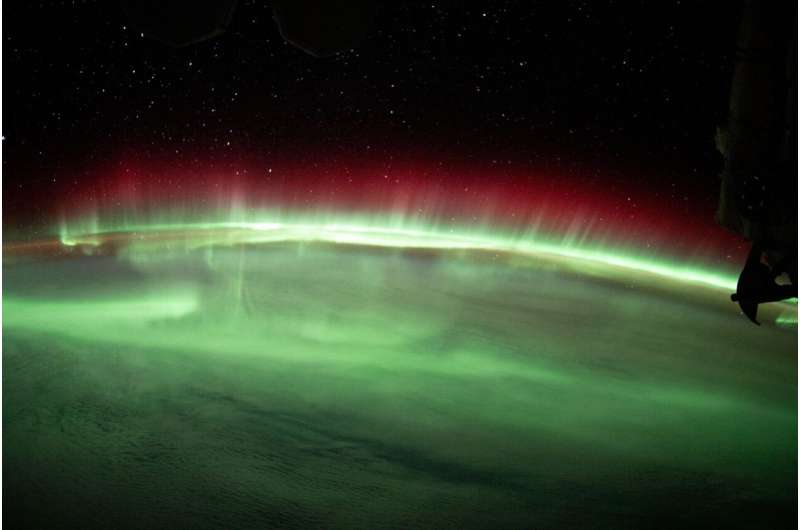Its "incredible atmospheric lightshow" is "just as captivating" as that of the aurora borealis, the magazine says.
In the image, which NASA posted on Instagram and on its own site Tuesday, a greenish glow arises above the curve of the Earth. The color changes to red as the light goes higher above the horizon. At the right, a section of the International Space Station can be seen.
"The vibrant displays of light around Earth's North and South Poles are caused by the interaction of solar particles, ejected by the Sun, and our planet's protective magnetic field," NASA's Instagram post of the image describes.
During large solar storms, the post continues, "the Sun spews large bubbles of electrified gas which collide with our magnetic field at its North and South Poles and enter our atmosphere ... these energized solar particles collide with atmospheric gases resulting in beautiful displays of light."
When the particles collide with oxygen in the atmosphere, "they give off rich red and green hues as seen in this image. Conversely, if these same particles collide with nitrogen in our atmosphere they illuminate the sky in glows of blue and purple," NASA said.
Bob Hines, a pilot currently on the ISS, took the picture and several others he posted on Twitter last week, noting the "Absolutely SPECTACULAR aurora today!!"
On Twitter, Hines answered some questions about the images including one tweet that asked: "Are you tweeting from space?"
"Yup," Hines responded.
On Instagram, the image had nearly 1 million likes on Wednesday, including one from the rock band Garbage. Along with the images, NASA encouraged its followers to "Let your light shine."
(c)2022 USA Today
Distributed by Tribune Content Agency, LLC.



